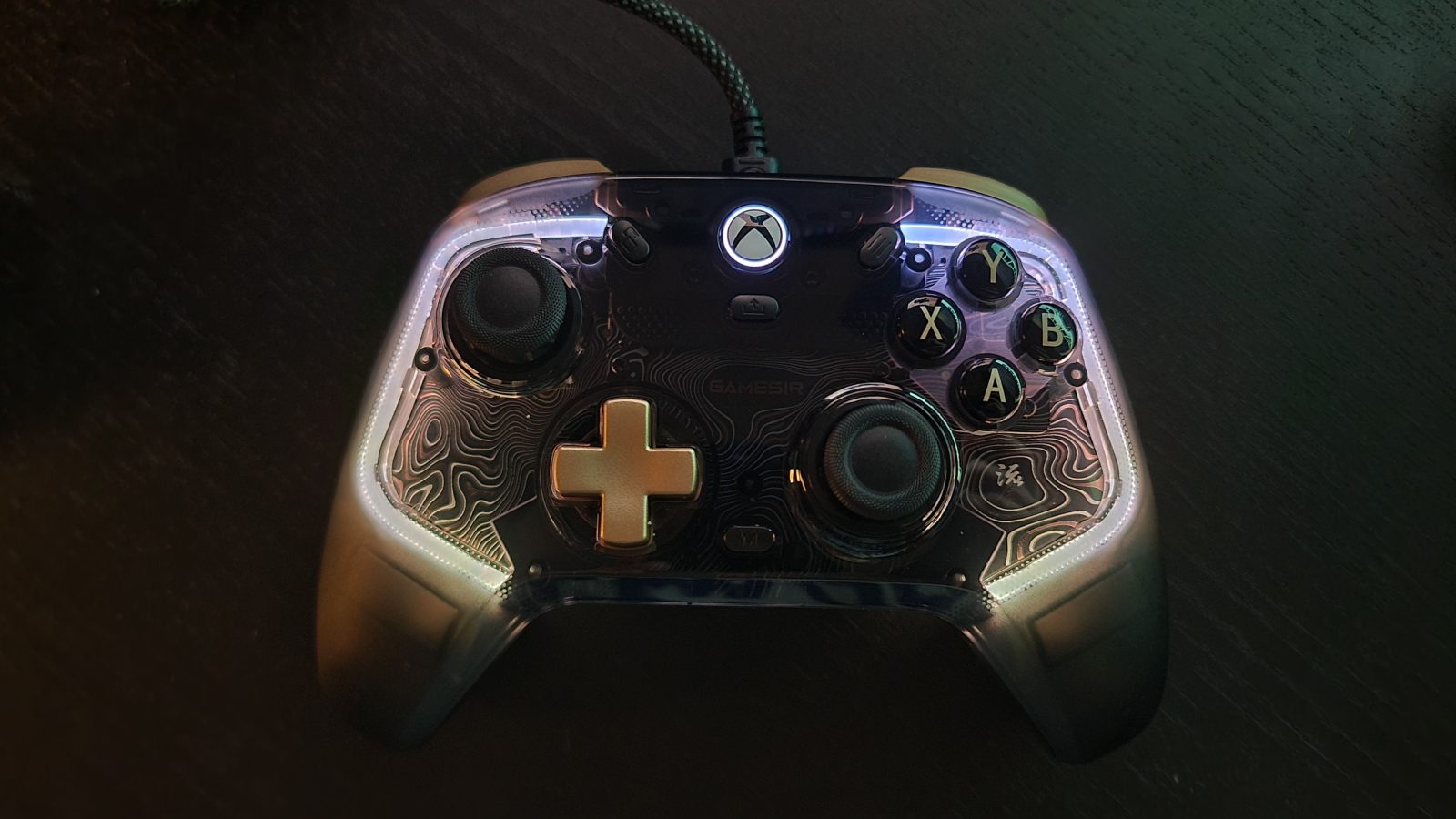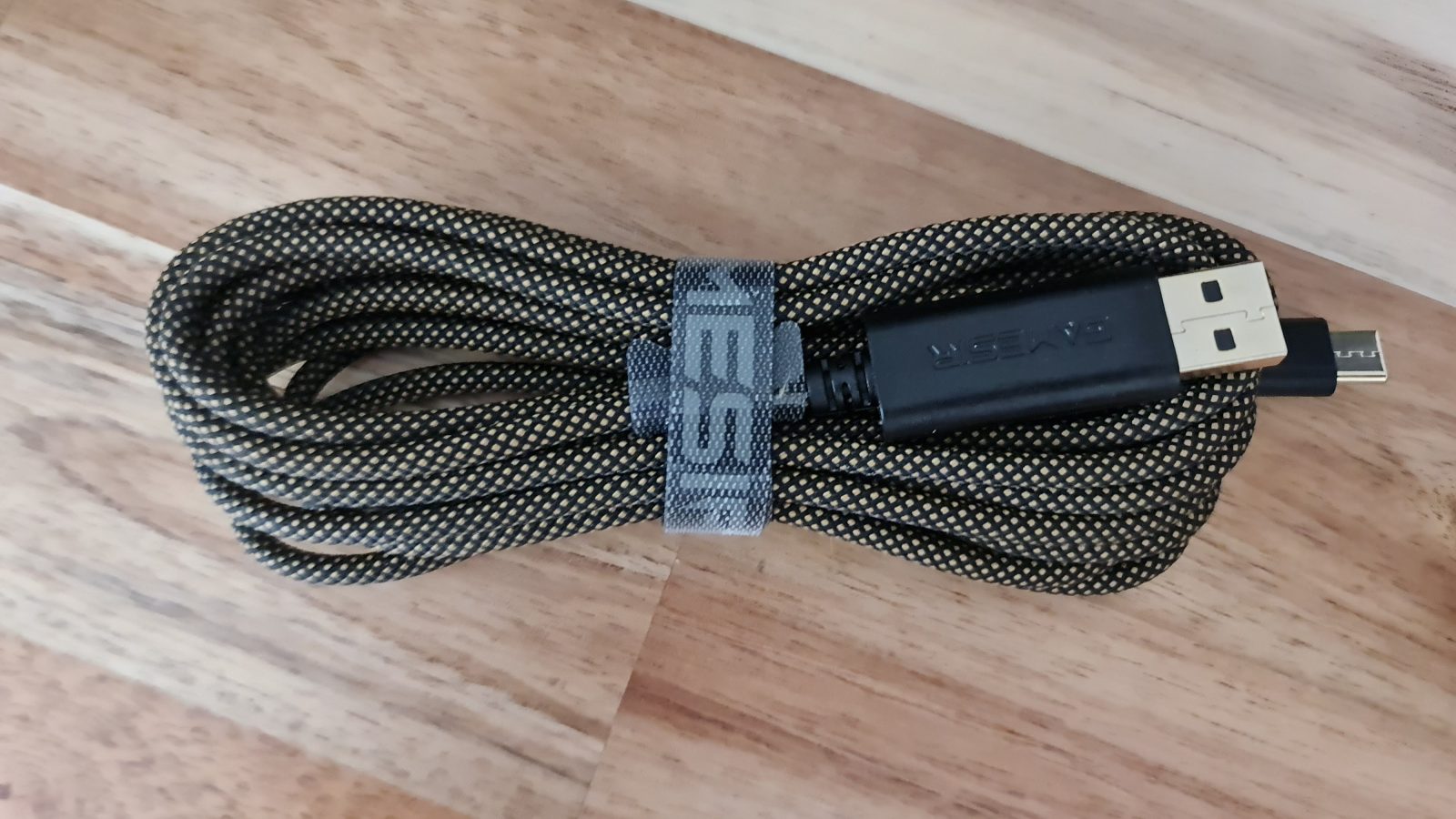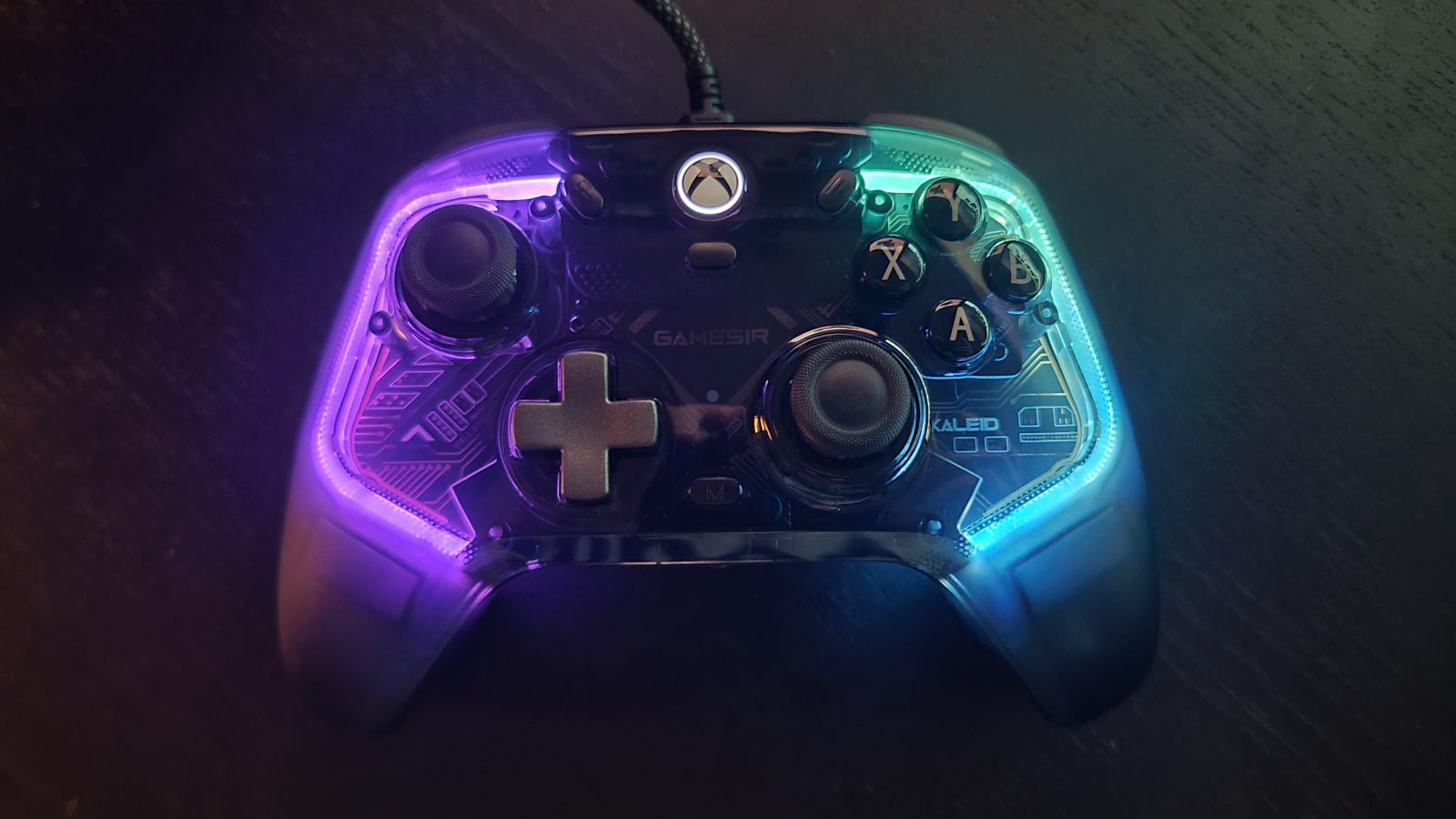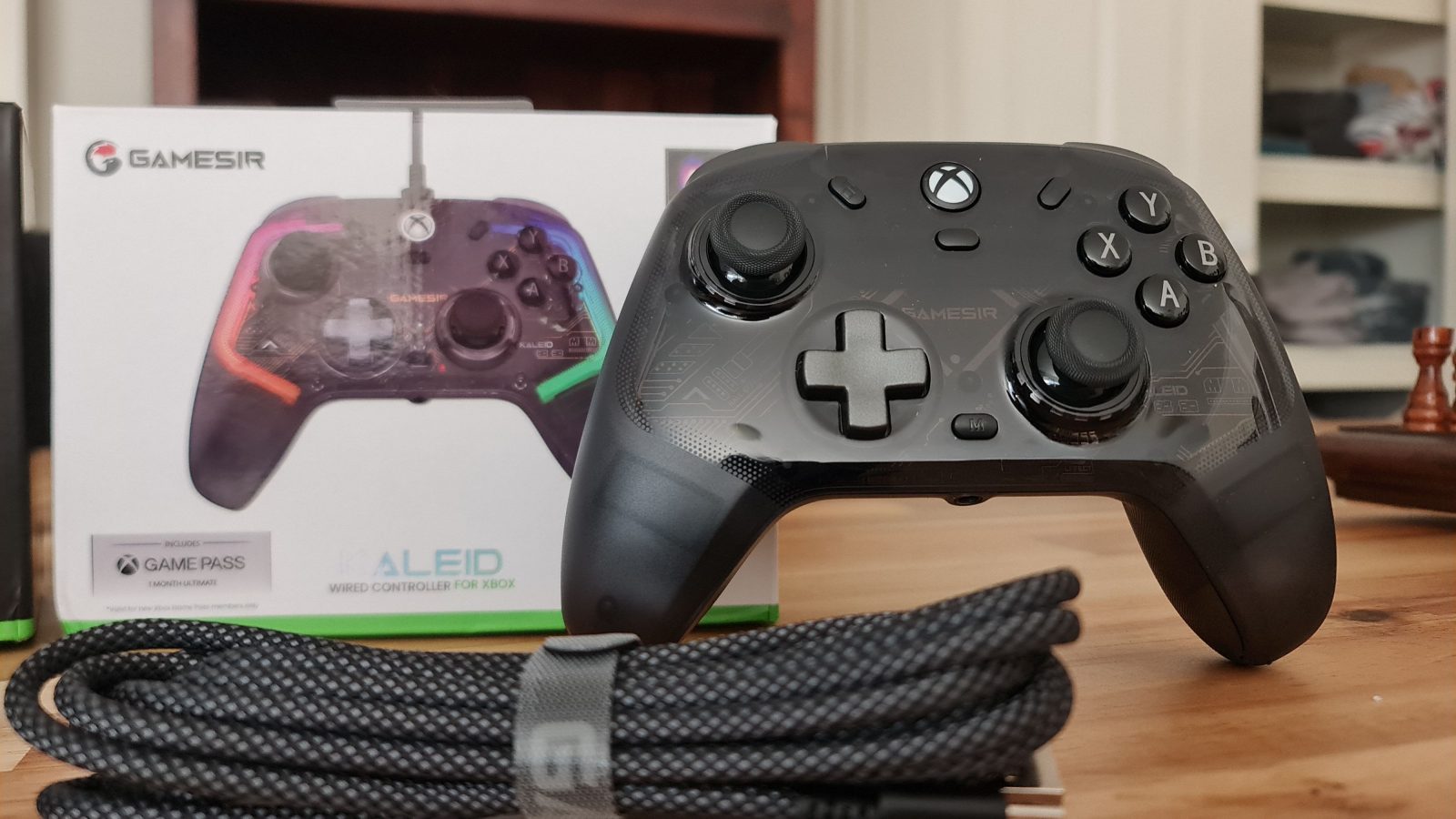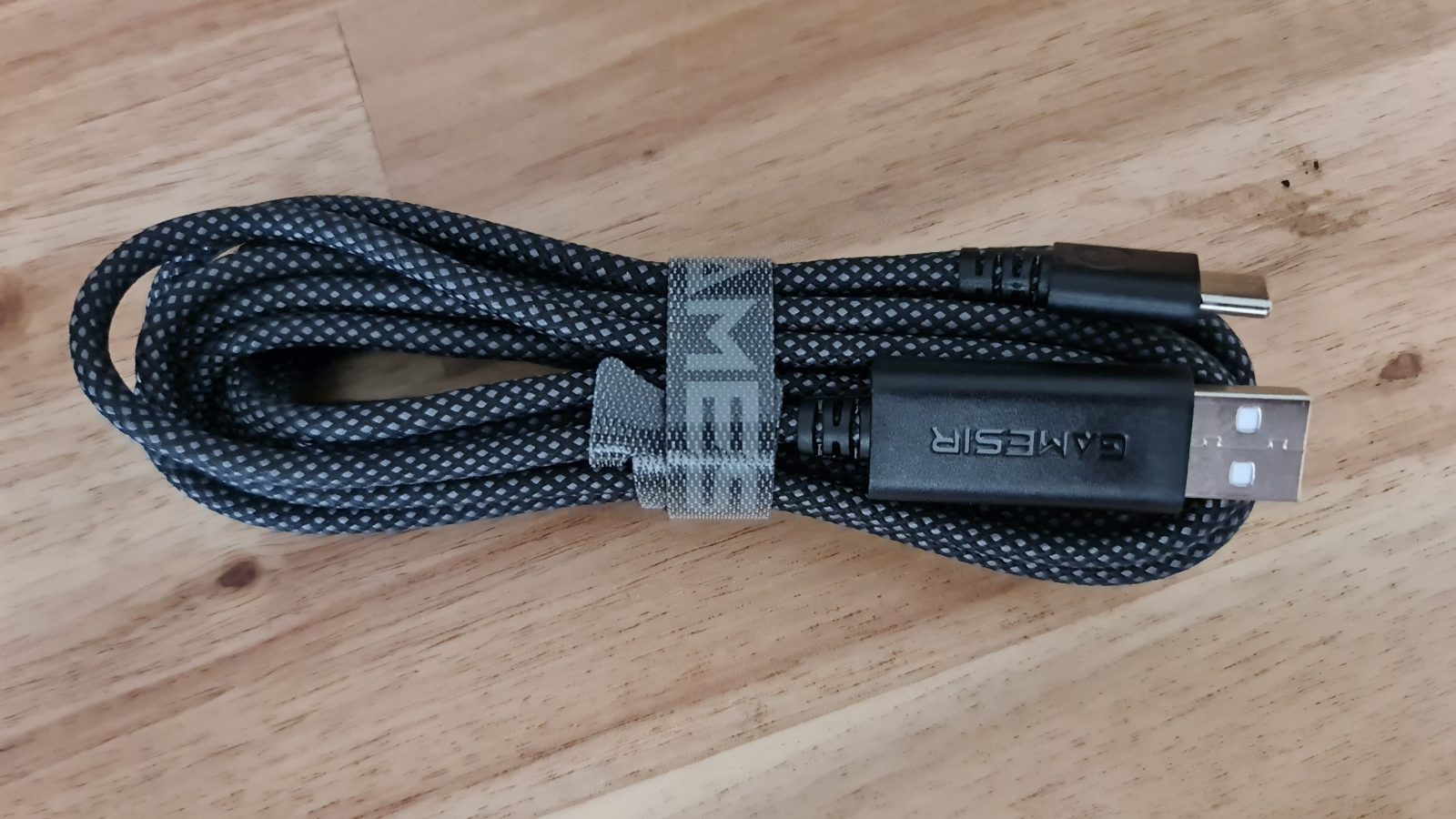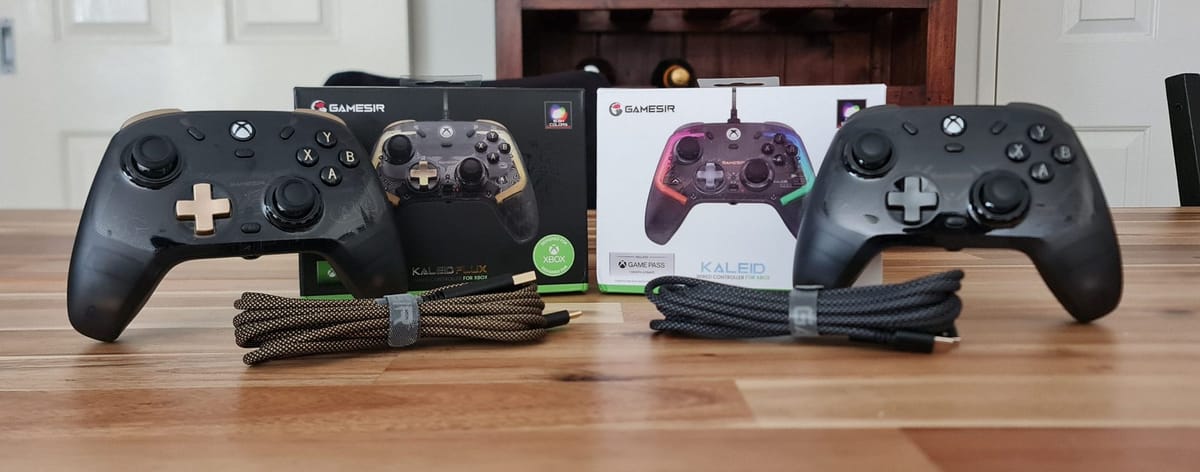
Although I’m mostly a PC player nowadays, I still keep a controller nearby in case it would benefit a given game. Like Hades, and most hack-and-slash games, it’s very difficult to play them on keyboard and mouse. Or more niche things, like Starfield’s ship builder — which is so much more comfortable to operate with a controller. But like choosing your PC peripherals, choosing your go-to controller is also a personal choice. Do you go with something you’re familiar with, like a PS4 controller? Or do you choose something that’s comfortable in your hands and connects seamlessly with your PC?
GameSir has just released their variation of Xbox controller — arguably one of the best controller designs that a gaming company has ever graced us with. However, it’s not exactly the same. GameSir’s Kaleid and Kaleid Flux Xbox wired controllers have opted for a dramatic reinvention, boasting a different design, more responsive triggers, thumbsticks with hall-effect sensors, lighting, and back buttons.
Before we get into their details it’s important to point out that there’s only a slight difference between the Kaleid and Kaleid Flux Xbox wired controllers, and we’ll hit each one in due course. They’re mostly similar; from RGB placement to how each controller feels in your hands, the rumble, the hall-effect thumbsticks, to the back buttons, to the low price points of $49.99 and $46.99 respectively.
The RGB is a very nice touch, with two neon tube-esque lights running on either side of the controller under the transparent faceplate. Equally nice is the visible black and gold circuit board, which stands out beautifully against the glow of the RGBs. Speaking of the faceplate, Gamesir has very cleverly applied a matte finish to the grips of both controllers on the faceplate and applied a dimple texture to the back grips — not only for better grip but to prevent leaving marks and prints behind each time you play.
The four rumble motors feel nicely tuned, and it’s especially noticeable when playing games like Starfield — from lift-off to fighting pirates, feeling the rumble of the engines is equally immersive as it is satisfying. It also feels beefier than the standard Xbox controller, which is, of course, the main competition. The hall-effect thumbsticks and triggers are also a great idea — gone is the mechanical “drifting” illness of potentiometers, and along for the ride are magnetic hall-effect sensors. Not only do they avoid that awful mechanical issue, but they offer better precision – and if you’re gaming competitively every little bit of advantage counts.
The back buttons on both the controllers are a great idea, although they feel very plasticky and unfortunately there’s only one on either side of the inner grip. A controller like this would’ve benefitted from at least one more on either side and with a significantly clickier response — something more satisfying than the general “thud” feeling that they currently provide. However, these buttons are both fully customizable — so you can easily set them to whatever in-game action that you want.
Now where they differ is where it gets interesting. The Kaleid’s D-pad and XYAB buttons are extremely clicky-sounding and instantly responsive, whereas the Kaleid Flux buttons have a cushioned membrane behind them. That’s a big difference. For most people, the membrane buttons are gonna be the go-to choice — after all, they offer the same feeling as a standard controller. But for competitive games? The snappy, clicky Kaleid switches will be your best choice. After all, the less travel distance from press to actuation will give you a slight edge over your competitors.
GameSir Kaleid and Kaleid Flux Xbox wired controller
Excellent
The Kaleid Flux and Kaleid are amazing. It’s a fantastic design choice to run a transparent faceplate to get a glimpse of the circuit board and those hall-effect sensors, and that's only enhanced by a clever use of RGB lighting. There are minor differences between each controller, such as the clickier front buttons on the Kaleid — but both are designed to suit the needs of casual and competitive gamers, respectively. The only issue is the plasticky back buttons, but that doesn’t otherwise put a damper on an otherwise incredible pair of wired controllers.
Pros
- Hall-effect sensors and powerful haptics
- Both a great choice to cover the needs of standard and competitive gamers
- Gorgeous controller and design choices
- Incredibly generous price point
Cons
- Back buttons offer a poor click and feel too plasticky

